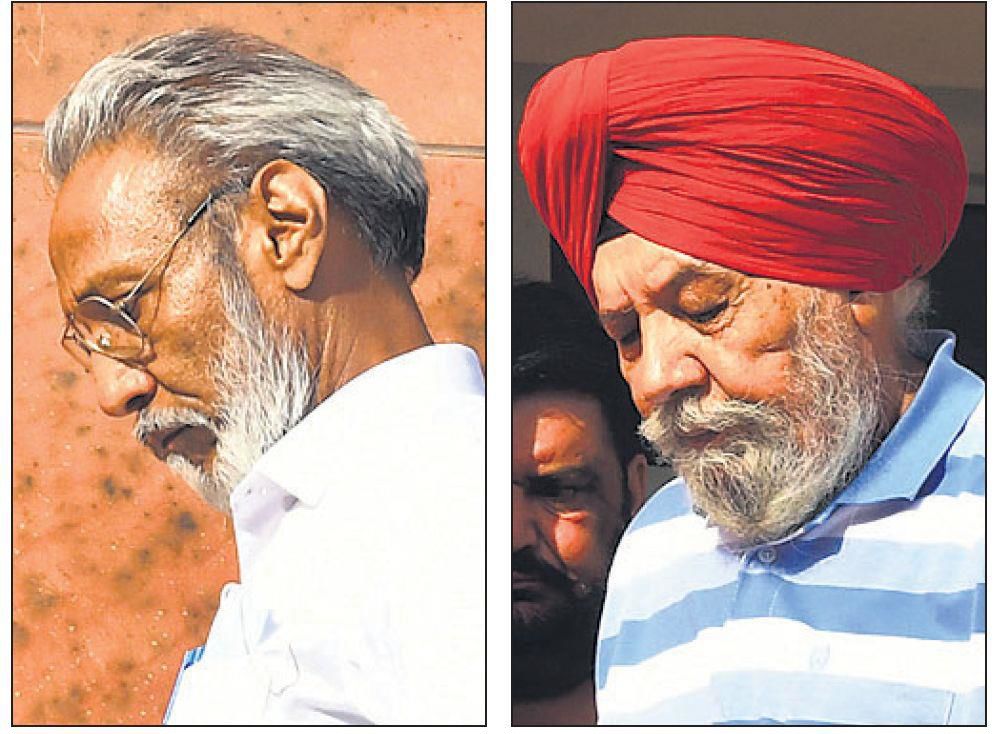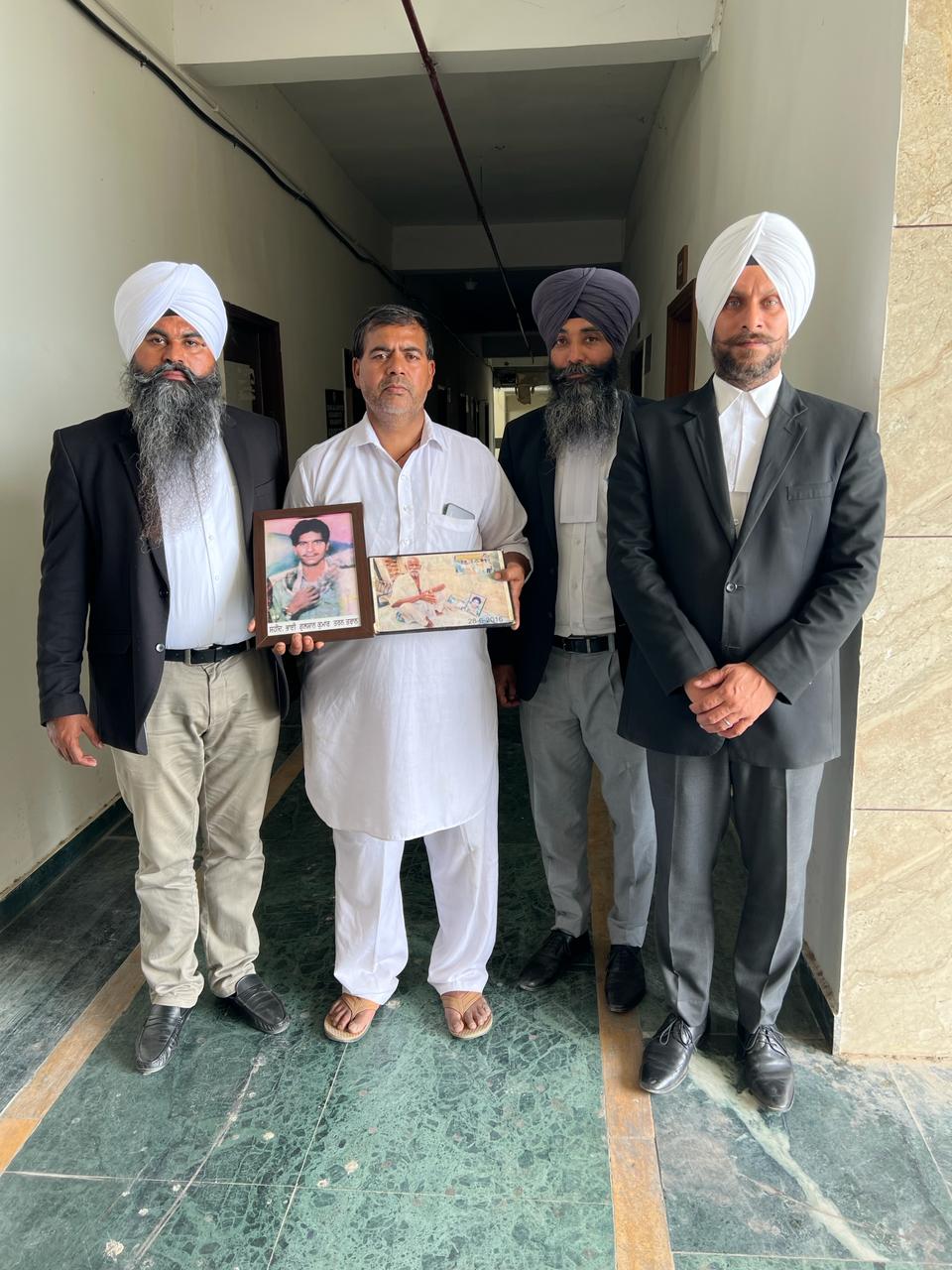Sikh News
Former DIG & DSP Get Jail Terms in 31 Years Old Fake Encounter Case
June 8, 2024 | By Sikh Siyasat Bureau
Chandigarh/Mohali: A Special Central Bureau of Investigation (CBI) court, presided over by Judge RK Gupta, in Mohali, yesterday (7 June 2024) sentenced two former officials of the Punjab police in a 31-year-old fake encounter extrajudicial murder case. Punjab police DIG Dilbagh has been sentenced to seven years of rigorous imprisonment, while former DSP Gurbachan Singh has been handed a life term.

Dilbagh Singh and Gurbachan Singh
The case dates back to 22nd June 1993 when Gulshan Kumar, a vegetable vendor, was abducted and later murdered by the police officials. Chaman Lal, the father of the victim, lodged a complaint about his son’s disappearance. He maintained that Gulshan Kumar and his brothers were picked up by a police party led by DSP Dilbagh Singh and Gurbachan Singh. While the brothers were later released, Gulshan Kumar was not, and his body was later claimed to have been found in an encounter on 22nd July 1993, along with three others. The bodies were cremated as unclaimed.

Bapu Chaman Lal, Gulshan Kumar’s father, began the legal battle in this case and persevered until his passing.
The CBI took over the investigation following a Supreme Court directive in 1995 regarding large-scale cremations of unclaimed bodies.
During the trial, it was revealed that the accused police officials, including Dilbagh Singh and Gurbachan Singh, had abducted Gulshan Kumar and subsequently staged his death in a fake encounter.

Former DIG Dilbagh Singh was sentenced to seven years of rigorous imprisonment under IPC Section 364, along with a fine of Rs 50,000.
Former DSP Gurbachan Singh received a life term under IPC Section 302 and was fined Rs 2 lakh. He was also sentenced to seven years of rigorous imprisonment under Section 364 with a fine of Rs 50,000, four years of rigorous imprisonment under Section 201 with a fine of Rs 50,000, and two years of rigorous imprisonment under Section 218 with a fine of Rs 25,000, totaling to Rs 3.25 lakh.
Additionally, the court ordered a compensation of Rs 2 lakh to be awarded to the family of the victim, Gulshan, from the fine collected from convicts.
The prosecution, represented by CBI Law Officer Anmol Narang along with Sarabjit Singh Verka, Jagjit Singh Bajwa, Baljinder Singh Bajwa, and Pushpinder Singh Natt, argued for life imprisonment to the convicts, highlighting the heinous nature of the crime. They emphasized that Gulshan Kumar was an innocent civilian with no ties to militancy. In contrast, the defense attorneys argued for mitigating factors such as the accused’s age, health, and family backgrounds.
The case of Gulshan Kumar’s disappearance and subsequent extrajudicial killing stands as a rare instance a sea of enforced disappearances that often went unregistered and uninvestigated. Many similar cases of mass-level enforced disappearances during the period of the 1980s and 1990s in Punjab remained buried in obscurity, contributing to a culture of impunity.
The prolonged delay in trials allowed the accused police officials to continue their service in the Indian forces, enjoying all associated benefits despite the grave accusations against them.
In past instances where police officials were convicted in similar cases, they were pardoned and granted release, further perpetuating a cycle of impunity. These patterns point towards a systemic issue within the Indian state, where crimes against humanity committed by state forces are met with leniency and forgiveness. The prevalence of such impunity raises serious questions about accountability and justice within the Indian legal system, particularly concerning crimes of such magnitude.
To Get Sikh Siyasat News Alerts via WhatsApp:
(1) Save Our WhatsApp Number 0091-855-606-7689 to your phone contacts; and
(2) Send us Your Name via WhatsApp. Click Here to Send WhatsApp Message Now.
Sikh Siyasat is on Telegram Now. Subscribe to our Telegram Channel
Related Topics: Central Bureau of Investigation, Central Bureau of Investigation (CBI), Enforced Disappearances, Fake Encounter, Human Rights, Human Rights Abuse in India, Punjab Police




